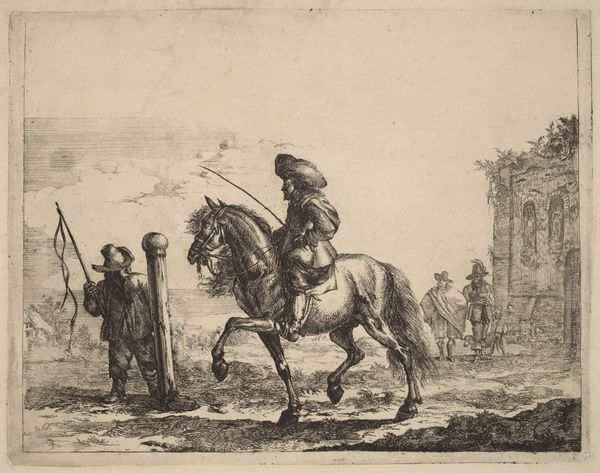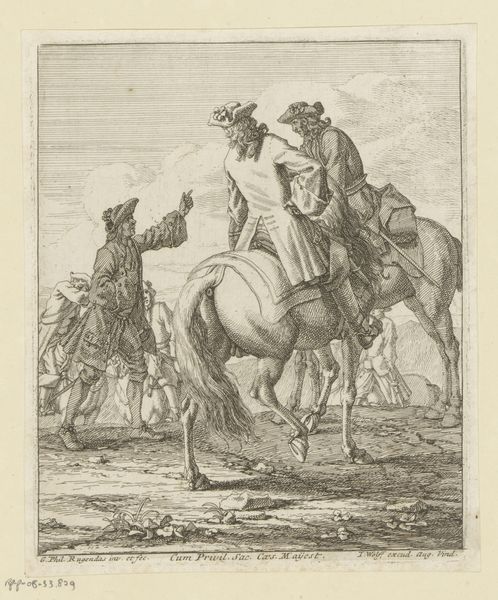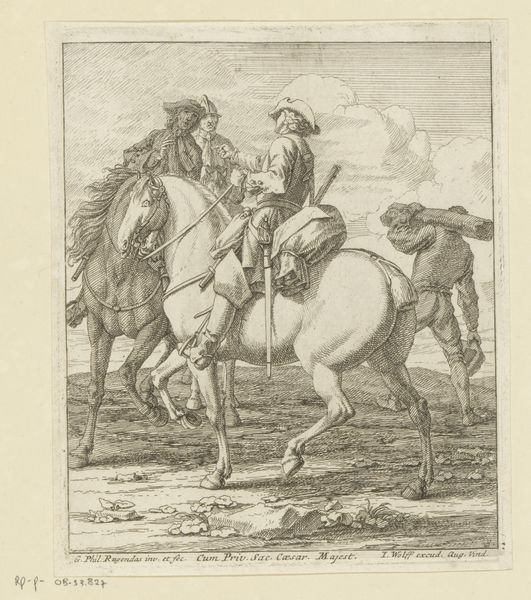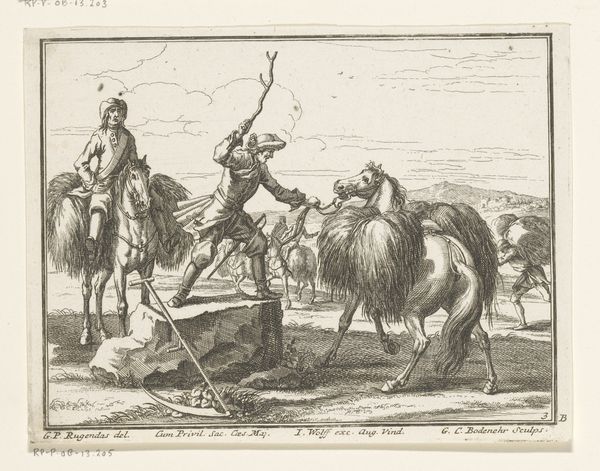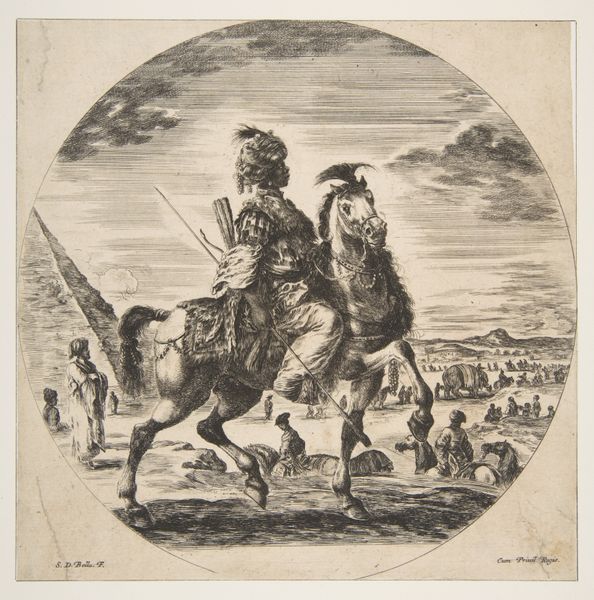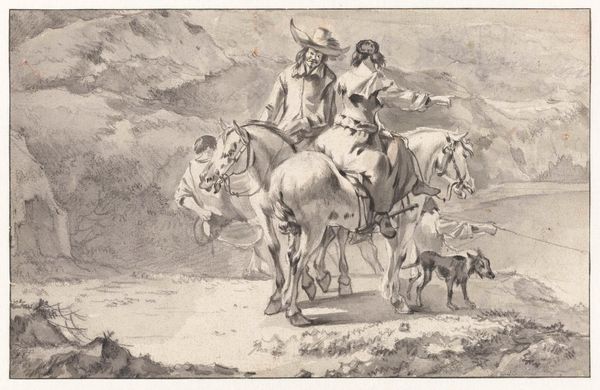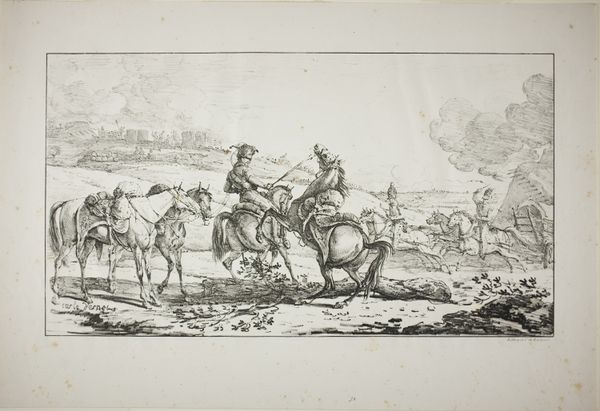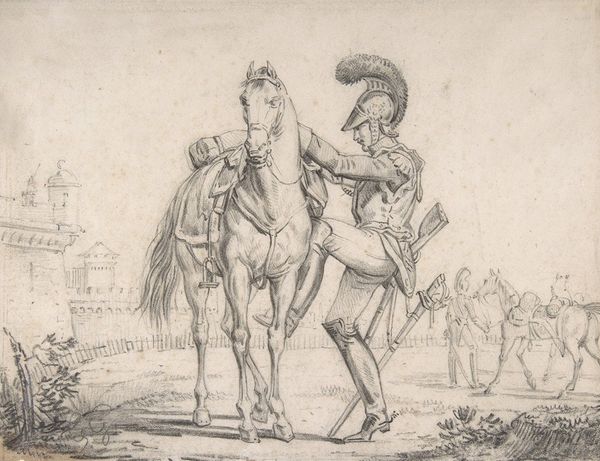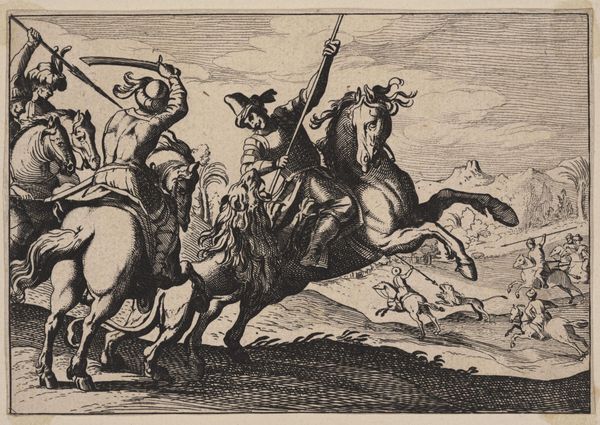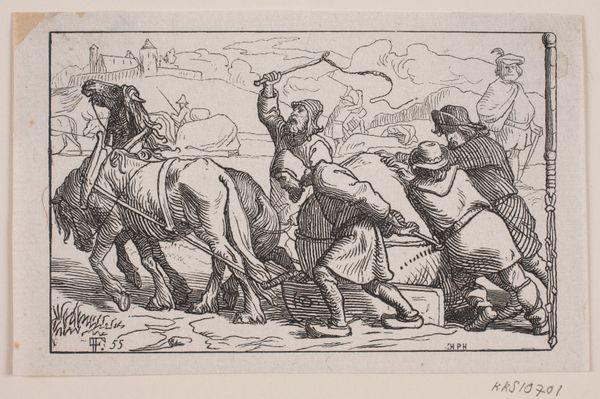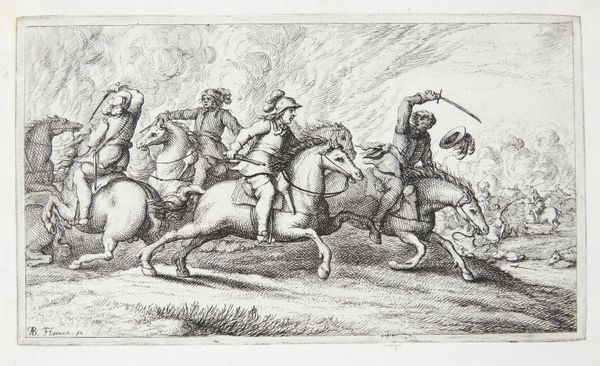
drawing, print, pencil
#
portrait
#
drawing
# print
#
pencil sketch
#
landscape
#
figuration
#
pencil drawing
#
romanticism
#
pencil
#
orientalism
#
history-painting
Dimensions: image: 18.8 x 26.4 cm (7 3/8 x 10 3/8 in.) sheet: 26.8 x 35.6 cm (10 9/16 x 14 in.)
Copyright: National Gallery of Art: CC0 1.0
Curator: Antoine-Jean Gros created "Arabe du désert," or "Desert Arab," in 1817. This work, rendered in pencil, offers a glimpse into the Romantic and Orientalist fascinations of the period. Editor: My first impression is the sheer busyness of it all. So much detail packed into a monochromatic drawing! The artist really captured the weight of the figures through dense lines. Curator: Gros's work fits into a moment where France was deeply invested in North Africa and the Middle East, both politically and imaginatively. It’s important to understand the implications of that colonial gaze. Editor: Absolutely. This image contributes to a visual archive, reinforcing particular narratives about power dynamics and cultural otherness. Note the implied subservience in the posture of the figure holding up the horse's reins. Curator: Yes, it's hard to overlook those hierarchical structures. Gros, influenced by his time serving Napoleon, was always keen to translate those military, power relations into painting or, as we have here, drawings. This artwork can be interpreted through a postcolonial lens that questions its underlying assumptions about race and identity. The very title “Desert Arab” simplifies and essentializes. Editor: Indeed. It's useful to think about who this artwork was made *for*. Gros created this around the time there were several shifts happening in the art world related to the politics of imagery and display in galleries and at the Salon. Who was the target audience, and how would *they* have understood it? How did that viewership then play into French fantasies of the ‘Orient?’ Curator: Precisely. By critically engaging with the social context of artistic production and its reception, we gain richer, much more complex perspectives of Gros’ drawing, its significance, and perhaps, its impact then and now. Editor: A complex vision indeed. Hopefully we can move past the romantic and consider the complicated implications of Orientalist artmaking during that period.
Comments
No comments
Be the first to comment and join the conversation on the ultimate creative platform.

